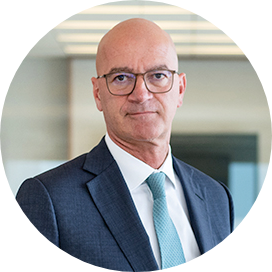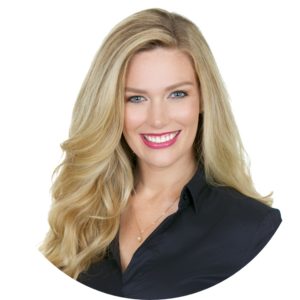Reflections on 2020 & the future economic outlook…
January 21, 2021
By, Vanessa Wieliczko, CFA, CAIA, CFP®
Chief Investment Officer, HoyleCohen
In a recent webinar, I had the pleasure of sitting down with Joachim Fels, managing director and global economic advisor at PIMCO, as we took a moment to reflect on the events of 2020 and to discuss possibilities for the future. Our discussion and several others that included the HoyleCohen Investment Committee are summarized below as is a full recording of the event.
To say that 2020 was unprecedented, is an understatement. Facing low interest rates, high equity valuations, and still lots of unknowns related to what a post-COVID world may bring, has many asking “what’s the upside for investing”?
2020 was a year in which we saw a jarring divergence of the economy and the financial markets. Notably, the pandemic further exasperated trends in income inequality and the widening wealth gap. At its worst, the pandemic put 22 million people out of a job. While some of these jobs eventually returned, the U.S. economy was still down 10 million jobs in December 2020 relative to a year prior. Small local businesses struggled to stay afloat, yet the public financial markets surged on.
While the S&P 500 suffered a staggering 34% loss between February 19th and March 22nd, a combination of swift monetary support and massive fiscal stimulus quickly brought the market out of its rut. “Financial markets reflect pessimism and fear rather quickly as seen in March, and growing optimism more begrudgingly over longer periods of time as seen through the balance of the year. We have seen this play out over many market cycles, as bull markets experience much longer lifespans than bear markets.” said Steve Taddie, a Senior Wealth Advisor and partner at HoyleCohen. Stock prices are forward looking and reflect the value of future earnings discounted by the risk-free rate. Thus, lower rates are generally supportive of higher equity valuations. Large caps ended the year up 16%, largely inflated by staggering returns in a handful of tech stocks, endearingly termed the “stay at home stocks”, that offset rather weak returns in many other areas of the market. What’s more, with declining rates and a flight to quality, the Barclays Aggregate Bond Index, returned 7.5% for the year. While it was a wild ride, investors that stayed the course were rewarded.
As we enter a new year, we look to the future with bounded optimism for the economy. Top scientists and thought leaders around the world worked tirelessly in 2020 to produce multiple vaccines in record time, and the 2021 vaccine rollout gives us hope. Initial estimates indicate we could see real GDP growth as high as 7% (a level not seen since 1984). Yet, higher growth levels are largely a reflection of a low starting point. In 2021 we expect another fiscal package, even bigger than that seen in 2020. Importantly, we expect continued monetary support – with the Fed expected to maintain low rates for the next several years, and purchases of $80B in treasuries per month, and $40B in mortgage backed securities per month expected to continue throughout 2021. While PIMCO expects pre-COVID activity levels by the third quarter of 2021, it is unlikely we’ll reach pre-COVID trends of economic activity until late 2022.
Despite a seemingly favorable macro-economic environment (low rates, supportive monetary and fiscal policy, a successful vaccine rollout), we are unlikely to have a repeat of 2020 market returns given where valuations are today. “Stock returns will most likely be more modest this year as companies’ earnings grow into current valuations. A way of thinking about this is that returns earned in 2020 may have “borrowed” from some of the earnings growth that will be realized in 2021. This is not unusual, and in fact is a positive after a steep advance – allowing the market time to digest the valuation levels and build a base for the next advance.” said Peter Mueller, a Senior Wealth Advisor and partner at HoyleCohen.
When investing in fixed income, we consider the intended role within the portfolio, as well as the expected risk and return. Among the top roles are capital preservation, diversification, and income production. Different segments of the fixed income markets behave differently under different scenarios. Core bonds should still play a role in a multi-asset portfolio. After all, when the S&P 500 was down 34% these bonds were up. Yet with the rally in fixed income last year, credit spreads are tighter and there’s less compensation for incremental risk. Furthermore, it’s likely the corporate default cycle has only just started as many of these companies were kept alive by artificial government support. For opportunities PIMCO suggests going global and investing in private credit where there may be dislocations and a premium for locking up capital for longer periods of time.
While there are many reasons to be hopeful, risks and uncertainty remain. In the near term, a few risks stand out as highest probability with the greatest potential impact. In all respects, the virus (new strains with greater transmission rates and higher morbidity) and the vaccine (effectiveness, successful rollout, sufficient adoption to reach herd immunity) are the greatest unknowns with the greatest potential impact. The extent of economic scarring resulting from the pandemic, and its impact on future personal consumption and corporate investment, remains to be seen. Moreover, as the pandemic carries on, the risk of fiscal fatigue may increase – whereby governments around the world may start getting nervous about the high budget deficits they’re creating.
Recent U.S. election outcomes also introduce some uncertainty. Fiscal support is likely to remain the top priority. Infrastructure will also be on the agenda with the Green New Deal. Trade policy is generally unlikely to change as the new administration continues to implement a “tough on China” policy. Tax and regulation could see meaningful change that would certainly pose a risk to the equity market (and tech stocks in particular), but given an already full agenda, we don’t expect either to play a significant role in 2021.
Longer term, inflation uncertainty will become a larger consideration. In 2020 the Fed changed their monetary policy strategy, aiming for a 2% inflation average over the long term rather than an absolute target. They are likely to allow inflation to overshoot 2% for some time to make up for the persistently low inflation seen in recent years. As a result, they are even less likely to raise rates anytime soon. To date, the public support in the form of monetary and fiscal policy, have just offset the big hole created by the contraction in private consumption. Simply put, there isn’t broad-based excess demand that typically results in inflation. While the unemployment rate has come down from the double-digit peaks seen in March 2020, it’s still way above the 50 year low of 3.5% seen in late 2019 (and we didn’t see broad-based inflation even then). Longer term, however, there is inflation risk if monetary and fiscal policies remain expansionary for significant periods of time even when private demand has returned to normal. But, as we have witnessed in the Japanese economy, there are other scenarios that could introduce deflation. Ultimately, the writing isn’t on the wall one way or the other, and inflation is an uncertainty we will continue to grapple with over the coming years.
Heightened national debt levels resulting from the pandemic may pose a greater risk when rates eventually do rise. In a way, we were very lucky to have been in a situation where we were able to finance a significant increase in debt at low interest rates. As a share of GDP, the ~1.5% going to service national debt today, is much lower than it was in the 1980s and 1990s despite the fact that total debt is now much greater. It only becomes a problem if and when interest rates rise significantly. While that’s a possibility, PIMCO doesn’t believe it’s likely even over the medium and longer term based on what they believe are secular forces holding rates down. Perhaps most notable, demographics and technological advancement. The aging population in the U.S., and in many countries globally, means a shift towards bonds. There is also an increasing demand for safe assets from other parts of the world with a growing middle class in many emerging markets. Additionally, technological advancement and digitization are resulting in higher rates of saving and lower rates of investment, thereby further suppressing interest rates.
Given our outlook for the future, how should you invest? The best recommendation we can provide is to set a long-term strategic allocation with the support of a trusted Advisor, and to stick with it unless or until your individual circumstances change. It’s clear that the financial markets are impacted by a multitude of related, but complexly intertwined factors which make short-term predictions often wildly inaccurate. 2020 provided countless examples in support of the old adage “don’t try to time the market”. We believe broad diversification is the right strategy – across asset classes, public and private, across regions and countries. Our Investment Committee spends a good deal of time discussing long-term capital market assumptions to inform our asset allocation for the future. As our expectations evolve, we may make small changes to the underlying investments of your portfolio. As always, we appreciate your confidence and support as we seek to build portfolios for the long run.
If you or someone you know would benefit from speaking with a HoyleCohen Advisor, we encourage you to reach out.
For a full recording of the virtual event, please click below:
Your Hosts:
Joachim Fels: Global Economic Advisor, PIMCO
Mr. Fels is a managing director and global economic advisor based in the Newport Beach office. He is a member of the Investment Committee and leads PIMCO’s quarterly Cyclical as well as the Secular Forum process. Prior to joining PIMCO in 2015, he was global chief economist at Morgan Stanley in London. Previously he was an international economist at Goldman Sachs and a research associate at the Kiel Institute for the World Economy. He has 33 years of macro research experience and holds a diploma in international studies from the Johns Hopkins University School of Advanced International Studies in Bologna, Italy; a master’s degree in economics from Universität des Saarlandes in Saarbrücken, Germany; and an undergraduate degree from Christian-Albrechts-Universität in Kiel, Germany.
Vanessa Wieliczko, CFA, CAIA, CFP®:
Chief Investment Officer, HoyleCohen
Ms. Wieliczko oversees the firm’s investment department and leads the Investment Committee. She joined HoyleCohen in 2008 and helped develop the firm’s CorePlus approach, a unique blend of traditional and alternative assets. Vanessa holds a Bachelor’s degree in business administration and management with a concentration in international finance from Boston University. Driven in pursuit of excellence, she obtained her Chartered Financial Analyst, Chartered Alternative Investment Analyst, and Certified Financial Planner designations all before turning 30. Active in the community, Vanessa serves on the board as President of the CFA Society San Diego, a group of more than 500 investment professionals.
The information above is for illustrative purposes only and nothing herein should be interpreted as investment advice. It should not be assumed that future performance of any specific investment or investment strategy will be profitable. All information contained herein is accurate to the best of our knowledge and is based on our reliance on materials provided directly by the investment manager. All investments carry the risk of loss, including the permanent loss of principal. Past performance is not a guarantee of future results.



